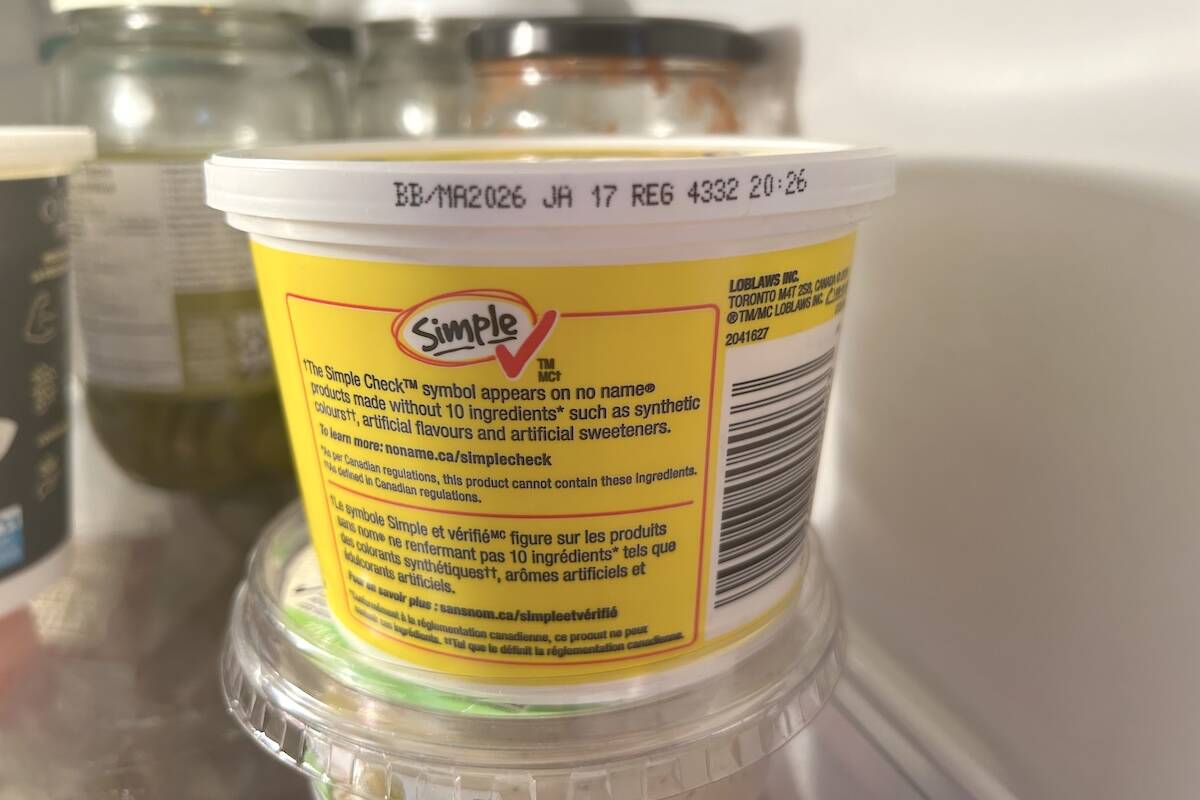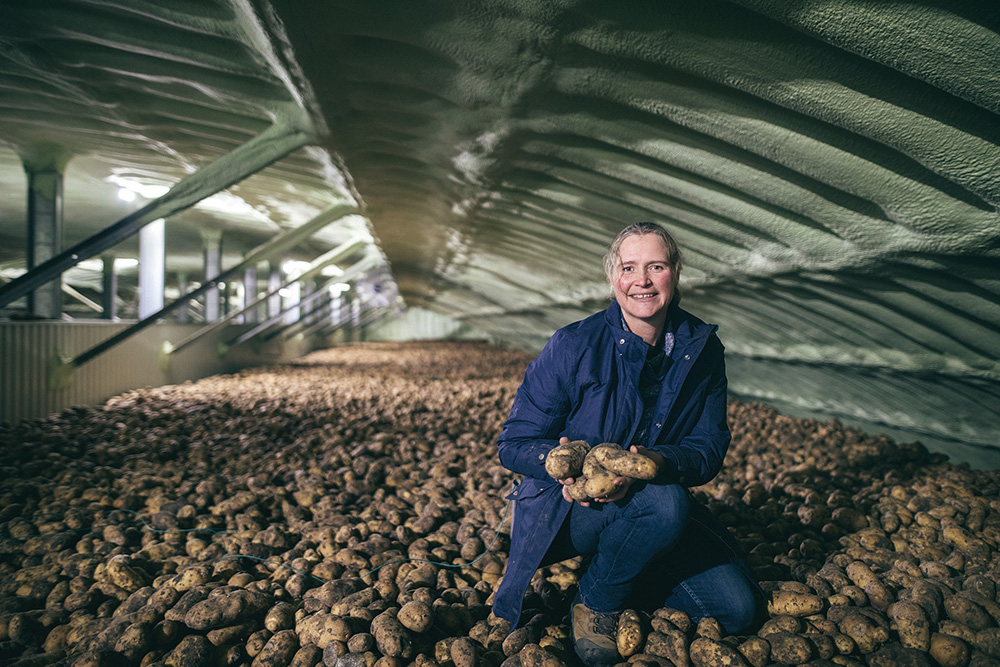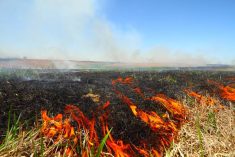A farm, particularly during a busy season, is at best barely controlled chaos, with vehicles, equipment, employees and even kids all competing for the same farmyard real estate.
So how do you bring order to that chaos and keep everyone safe? Ask Hanneke Camps and she’ll tell you communication is the key.
Although everyone talks about the importance of communication, Hanneke and Michel Camps — who run a potato, wheat, sugar beet and grain corn operation near the southern Alberta community of Barnwell — have truly taken it to heart.
Read Also

Best before doesn’t mean bad after
Best before dates are not expiry dates, and the confusion often leads to plenty of food waste.
This has meant a change in management style from a traditional top-down model to something more lateral.
“I find that the biggest thing that’s changed on our farm is that everybody can talk about (farm safety),” she said. “It’s a team effort. If anybody sees something unsafe or sees somebody do something unsafe, then anyone can call each other on that.
“I think in the old days (farm management) was kind of, ‘You go to work and you listen.’ I think that has changed. Like any business you do it together with your employees; it’s not just my husband and I who make it all work. We need our employees; we need good help to make ourselves profitable.”
A personal challenge
It’s safe to say that Camps knows a thing or two about farm safety. The couple built their farm safety program in 2017 with the help of the organization that would become AgSafe Alberta. However, Hanneke — who serves on AgSafe’s board — wasn’t satisfied with just having a safety plan; she wanted to put it to the test. She did so by receiving her Certificate of Recognition (COR).

A requirement in many industries but not for agriculture, COR certification requires regular auditing of an employer’s health and safety management system to ensure it meets provincial standards established by Occupational Health and Safety.
“We don’t have to be COR certified as a farm. It was more by choice — finding out what we could achieve,” she said.
She let her COR expire this year but noted that AgSafe Alberta is considering developing a more ag-focused certification program.
Managing ‘common sense’
The Camps’ employee safety training has evolved over time.
They started with, and continue to hold, approximately hour-long training sessions in the spring before seeding and again in the fall before harvest using AgSafe videos to help explain safety procedures and expectations to employees. Seasonal workers are walked through the farm’s emergency stops.
This training has become more responsive to new situations, said Camps, with safety concerns tackled as necessary during coffee breaks or other downtimes.
“It’s become more of an ongoing training program — instead of having one big session one time, we will have a training session every time we get new people,” she said. “Then we might have one a few days later again for more new employees.
“This past year I built a small PowerPoint presentation. It’s made it much easier. We talk about farm safety and food safety — which is important on our potato end — and then they have a little questionnaire to fill out. With that they sign off that they actually did the safety training.”
The needs of seasonal workers with varying degrees of farm experience are an ongoing concern. It’s crucial for a manager not to take “common sense” for granted, she said.
“My seasonal employees only come here for a couple of weeks out of the year. Some of them are unfamiliar with the equipment we’re working with and with that comes a big risk. We talk about ‘common sense’ but that’s different for everybody. What we as owners think is common sense may be way different from somebody who comes on the farm and doesn’t know the equipment.”
It may be counterintuitive for managers to tell diligent employees to slow down on the job, but that’s exactly what Camps does to reduce the chance of accidents taking place.
“During potato harvest we have a lot of traffic in the yard and sometimes we have to make sure everybody understands what the rules are, like making sure a driver sees you before crossing in front of a truck,” she said. “We tell them, ‘You work by the hour so just go the long way. The safe way. That way everybody will be able to see you.’”
Camps takes a similar approach with her children.
Although all of her kids are in school and no longer around for much of the working day, she still takes time with them once a year to review safe practices on the farm.
“With the kids — before harvest for sure — I take them on a safety tour and we just review. They learn things like the location of the fire extinguisher and waving at the driver when there’s a truck in the yard. If they wave back then you’re good to go because they have seen you. Little things like that.
“We have a lot of safety stuff on our farm but sometimes the kids are forgotten. You think, ‘Yeah they’ll know,’ but it’s good to talk about it and show them what’s all in place.”
Checking in and buddying up
Employees working alone ranks among Camps’ biggest on-farm concerns.
A big safety protocol on their farm is making sure management and employees know where lone workers are located and checking in with them periodically.
“We have two-way radios in all of our tractors and vehicles so it’s easy for somebody who is alone to get help if needed. We hear each other on the radio, so if we don’t hear from somebody for a long time my husband will just shoot a quick text to make sure everything is going good out there or to find out how far away someone is. That’s basically our check-in system.”
Grain bin engulfment accidents are one of the most common — and fateful — risks on any grain operation. The Camps prevent these by simply never going into the bins except for post-season cleanup, in which they use a buddy system.
“We always have two people in there when we clean them out. That’s just the common sense we’ve been talking about.”
For farm managers wishing to build a safety culture on their farms, she suggested starting with small pieces and working on it over time.
“AgSafe Alberta has some great QuickStart guides and videos to get you going as well as a new manual and workbook and advisers who can work with you to build a safety program.”
















